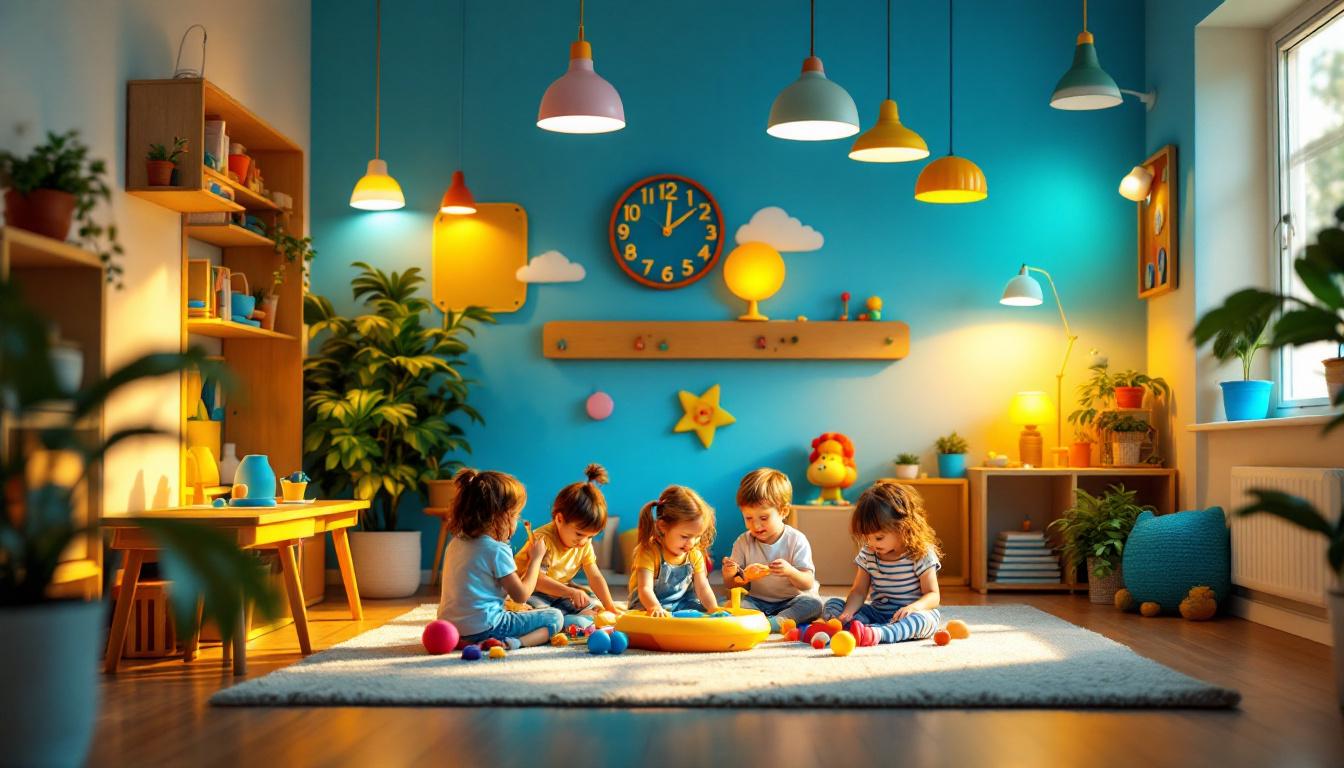
Indoor lighting plays a crucial role in creating the right ambiance and functionality in any space. Lighting contractors are responsible for ensuring that their designs not only meet aesthetic preferences but also adhere to safety standards and energy efficiency. However, even seasoned professionals can make mistakes that affect the overall quality of their work. This article explores common pitfalls in indoor lighting design and installation, providing insights for contractors to enhance their services.
One prevalent mistake among lighting contractors is overlooking the concept of layered lighting. Layered lighting involves combining different types of lighting—ambient, task, and accent—to create a well-balanced and functional environment.
Ambient lighting serves as the foundation of any lighting scheme, providing general illumination for a space. Task lighting, on the other hand, focuses on specific areas where activities such as reading or cooking take place. Lastly, accent lighting is used to highlight architectural features or decorative elements. Failing to incorporate all three layers can result in a space that feels flat or poorly lit.
Contractors should strive to achieve a harmonious blend of these lighting types. For instance, in a kitchen, ambient lighting might come from ceiling fixtures, while under-cabinet lights serve as task lighting. Accent lighting could be used to illuminate artwork or a decorative backsplash. By thoughtfully integrating these layers, contractors can enhance both the functionality and aesthetics of a space.
Moreover, the interplay between these lighting types can significantly affect the mood and usability of a room. For example, in a home office, ambient lighting can create a comfortable environment, while focused task lighting can help reduce eye strain during long hours of work. Accent lighting, such as a stylish desk lamp or wall sconces, can not only provide additional light but also add personality and style to the workspace. By carefully considering the placement and intensity of each layer, contractors can tailor the lighting to meet the specific needs of the occupants, making the space more inviting and efficient.
Additionally, the choice of light fixtures and bulbs plays a crucial role in achieving the desired effect. Warm LED lights can create a cozy atmosphere, while cooler tones may be more suitable for task-oriented spaces. Dimmers can also be an invaluable tool, allowing homeowners to adjust the brightness according to the time of day or activity. By embracing the concept of layered lighting, contractors not only elevate the aesthetic appeal of a space but also contribute to a more versatile and enjoyable living experience for their clients.
natural light is an essential component of indoor lighting that is often underestimated. It not only reduces energy consumption but also positively impacts mood and productivity.
Before finalizing any lighting design, contractors should assess the natural light sources available in the space. This includes considering the orientation of windows, the size of openings, and any potential obstructions such as trees or buildings. By understanding how natural light interacts with the space throughout the day, contractors can better plan their artificial lighting solutions.
Incorporating daylight into the lighting design can lead to more energy-efficient solutions. For example, strategically placed mirrors can reflect natural light, enhancing its reach within a room. Additionally, using dimmers on artificial lighting can help adjust the light levels as natural light changes throughout the day, creating a more dynamic and comfortable environment.
Color temperature is a critical aspect of lighting that can significantly affect the mood and functionality of a space. Many contractors make the mistake of not considering the color temperature of the fixtures they choose.
Color temperature is measured in Kelvin (K) and ranges from warm (below 3000K) to cool (above 5000K). Warm light creates a cozy atmosphere, making it ideal for living rooms and bedrooms, while cooler light is better suited for workspaces like offices and kitchens. Selecting the appropriate color temperature for each area can enhance the overall experience of the space.
To maintain a cohesive look throughout a home or commercial space, it is essential to use lighting fixtures with compatible color temperatures. Mixing different temperatures can create an unsettling atmosphere, detracting from the intended design. Contractors should educate their clients on the significance of color temperature and guide them in making informed choices.
fixture placement is another critical factor that can make or break a lighting design. Poorly placed fixtures can lead to uneven lighting, shadows, and glare, ultimately compromising the functionality of the space.
When planning fixture placement, contractors should consider the purpose of the space and the activities that will take place within it. For instance, in a dining area, pendant lights should be hung at an appropriate height to provide adequate illumination without obstructing views. Similarly, in a workspace, task lights should be positioned to minimize shadows and glare on work surfaces.
Many lighting design software tools are available that can help contractors visualize fixture placement and its impact on the overall lighting scheme. By leveraging these tools, contractors can avoid common placement mistakes and create more effective lighting designs.
In an era where sustainability is paramount, neglecting energy efficiency in lighting design is a significant oversight. Many contractors still rely on outdated practices that do not prioritize energy conservation.
Contractors should advocate for the use of energy-efficient fixtures, such as LED lights, which consume significantly less energy than traditional incandescent bulbs. Additionally, incorporating smart lighting controls, such as timers and motion sensors, can further enhance energy efficiency by ensuring lights are only used when needed.
Educating clients about the long-term benefits of energy-efficient lighting solutions can lead to more informed decisions. Highlighting potential savings on electricity bills and the positive environmental impact of energy-efficient choices can encourage clients to invest in sustainable lighting options.
Dimming options are often overlooked in lighting designs, yet they can significantly enhance the versatility of a space. Many contractors fail to incorporate dimmers, limiting the adaptability of the lighting scheme.
Dimmers allow users to adjust the brightness of their lighting, creating different moods and atmospheres as needed. For example, in a home theater, dimming the lights can create an immersive experience, while brighter settings may be more appropriate for social gatherings. By including dimming options, contractors can provide clients with greater control over their lighting environment.
It is essential to ensure that dimmers are compatible with the types of bulbs being used, especially when working with LED technology. Not all dimmers work well with LED lights, which can lead to flickering or inadequate dimming capabilities. Contractors should stay informed about the latest advancements in dimming technology to offer the best solutions to their clients.
Safety should always be a top priority in lighting design and installation. Many contractors make the mistake of overlooking safety standards and regulations, which can lead to dangerous situations and liability issues.
Contractors must familiarize themselves with local building codes and regulations regarding electrical installations. These codes often dictate specific requirements for lighting in various settings, including residential, commercial, and industrial spaces. Ignoring these regulations can result in costly fines and unsafe conditions.
In addition to adhering to codes, contractors should implement safety measures such as using appropriate circuit breakers and ensuring proper grounding of fixtures. Regular inspections and maintenance of lighting systems can also help identify potential hazards before they become serious issues.
Effective communication is vital in any contractor-client relationship. However, many contractors fail to engage in meaningful conversations with their clients about their lighting needs and preferences.
Contractors should take the time to understand their clients’ vision and expectations for the lighting design. This involves asking questions about the intended use of the space, preferred styles, and any specific requirements. By establishing clear expectations from the outset, contractors can avoid misunderstandings and ensure client satisfaction.
Communication should not end once the project is completed. Providing ongoing support and being available for questions or concerns can help build trust and foster long-term relationships with clients. This approach not only enhances the client experience but can also lead to referrals and repeat business.
The lighting industry is constantly evolving, with new technologies and design trends emerging regularly. Contractors who fail to stay updated with these changes risk falling behind their competitors.
Investing in continuing education and training can help contractors stay informed about the latest advancements in lighting technology, design techniques, and energy efficiency practices. Many organizations offer workshops, webinars, and certifications that can enhance a contractor’s skills and knowledge.
Networking with other industry professionals can also provide valuable insights into emerging trends and best practices. Joining professional associations or attending industry events can facilitate connections and foster collaboration among contractors, designers, and manufacturers.
Indoor lighting design is a multifaceted process that requires careful consideration of various factors. By avoiding common mistakes such as neglecting layered lighting, overlooking natural light, and failing to communicate effectively with clients, lighting contractors can enhance their services and deliver exceptional results. Staying informed about industry trends and prioritizing energy efficiency will not only benefit clients but also contribute to a more sustainable future. Embracing these best practices can help contractors elevate their work and establish a reputation for excellence in the lighting industry.
Ready to avoid the common pitfalls in indoor lighting and take your projects to the next level? LumenWholesale is here to support you with spec-grade lighting products that combine quality, affordability, and convenience. Our extensive selection is designed to meet the highest industry standards, ensuring you deliver exceptional results every time. Say goodbye to inflated markups and hello to unbeatable wholesale prices, complete with the convenience of free shipping on bulk orders. Elevate your lighting game and discover the best value in wholesale lighting today with LumenWholesale.

Discover essential insights for lighting contractors on hospital bed lights, including design considerations, regulatory standards, and the latest innovations to enhance patient care and safety..

Discover essential insights into playroom lighting with our comprehensive guide for lighting contractors.

Discover the essential guide for lighting contractors with our comprehensive checklist for 4 ft LED lights.

Discover the transformative impact of solar patio lights on modern outdoor spaces and why staying informed is crucial for lighting contractors.